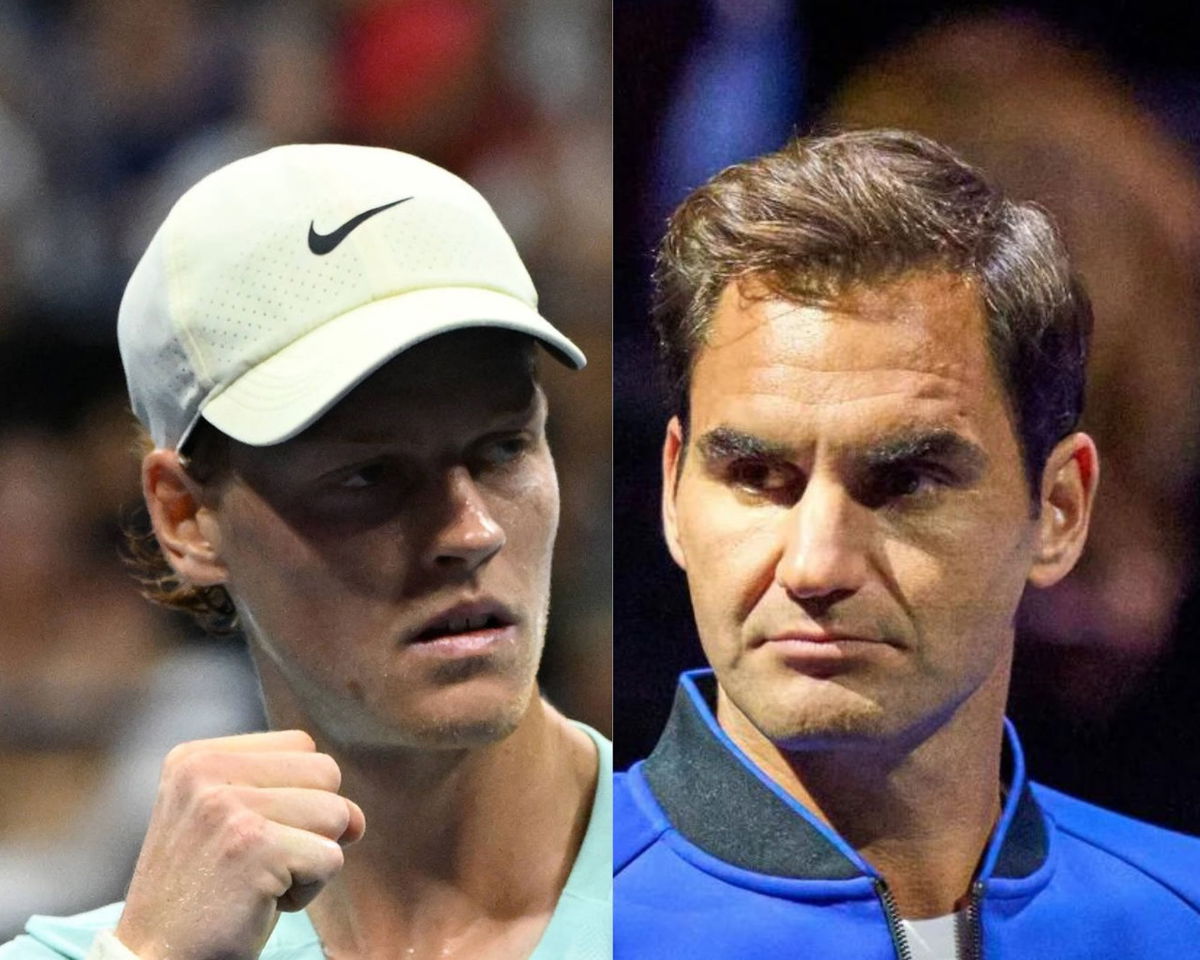
Imago
Image Credits – Imago

Imago
Image Credits – Imago
When it comes to knowing more than just the basics of the sport, who better than the legend himself? Roger Federer certainly knows the ins and outs of the courts around the world. Having played professionally for over two decades and staying involved through his brand ‘On’ and the Laver Cup, Federer shared some surprising opinions about the current stars. One of them included how the courts seem to favor Jannik Sinner. His comments left many curious, and now Jannik himself has responded.
Watch What’s Trending Now!
During Laver Cup weekend in San Francisco, Federer stirred the pot on Andy Roddick’s podcast, Served with Andy Roddick. He argued that uniform ball and court speeds make matches predictable, benefiting stars like Alcaraz and Sinner. “Obviously, I understand why they do it. It acts as a safety net for the weaker player – he has to hit amazing shots to beat Sinner. On fast courts, he might get past with just a few well-timed hits. That’s the thinking behind these decisions,” he said. His words clearly pointed to Sinner’s advantage.
When asked in Beijing ahead of the China Open, the World No. 2 stayed composed. “The hard courts, they are at times very similar. At times, there are some small changes, a couple of changes. One tournament that comes up a bit is Indian Wells because the ball bounces very high. It’s a bit different how the ball reacts with the court,” Sinner explained.
ADVERTISEMENT
🇮🇹 Jannik Sinner agrees with Roger Federer that the hard courts on tour play too similarly:
“The hard tracks are very similar to each other. There are times when there are a couple of changes, small changes.
“A tournament that comes to mind is Indian Wells, because the ball… pic.twitter.com/iGPfHqGbL0
— Olly Tennis 🎾🇬🇧 (@Olly_Tennis_) September 24, 2025
“But yeah, if not, we have more or less similar game situations on the court. This is how it has been for a long time, like this. I don’t know if there is going to be a change or not. I’m just a player who tries to adapt myself in the best possible way,” said Sinner. His response was steady, almost unbothered. “I feel like I’m doing a good job in this. But let’s see what the future can give us in every tournament.” But what could this mean?
ADVERTISEMENT
What the data says about court speeds
An insightful analysis from an X user inspects the courts in light of Roger Federer’s comments. The user points out that the Laver Cup court, which Federer likely influences, plays unusually slowly compared to many top men’s tour events. To test whether courts truly play the same across surfaces, the user compares two extremes from 2025: Monte Carlo, a slower clay court, and Cincinnati, a notably faster hard court. The numbers speak volumes: Monte Carlo’s adjusted ace rate is just 5.3%, while Cincinnati’s is more than double at 12.3%.
Beyond ace rates, rally length and court pace paint a clearer picture. Monte Carlo features longer rallies, averaging 4.75 shots, compared to Cincinnati’s shorter 3.58. The Court Pace Index (CPI), which measures how fast the ball moves, also shows a stark contrast: 29 in Monte Carlo versus a brisk 43 in Cincinnati. This confirms that courts still make an enormous difference in how matches unfold, challenging the idea that playing conditions are uniform across the tour.
ADVERTISEMENT
Grass and clay have shown noticeable differences in ace rates and rally lengths, and those patterns have stayed consistent over the years. Take Wimbledon and Roland Garros, for example: Wimbledon’s 10-year adjusted ace rate sits at around 12%, while Roland Garros lags significantly behind at about 6%. Surfaces still matter big time because they each handle spin differently, and spin rates have been huge lately. Players are smart too, constantly shifting their game, slice rates, return tactics, and all, to match what the court demands.
Top Stories
Aryna Sabalenka Braces for Punishment as “Insane” Schedule Debate Echoes Serena Williams’ Era

Madison Keys Battles Diana Shnaider Amid Injury Scare as Aryna Sabalenka Clash Awaits
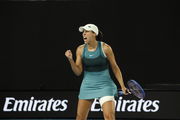
Wildcard Entrant Leaves Tennis World Shocked With Bizarre 20 Double Fault Gameplay
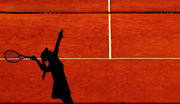
Qinwen Zheng Suffers Early 2026 Setback With Shock Australian Open Withdrawal
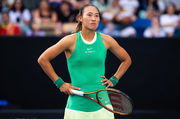
Inquiry Launched After Croatian Fans Stopped Over T-Shirts at ASB Classic

Player adaptations across surfaces
You can see this perfectly in how Lorenzo Musetti and Taylor Fritz approach returns. Musetti’s slice and topspin split varies by event—his 52-week average shows 68% topspin and 32% slice, but at Stuttgart and Queen’s Club, he balances it almost evenly with 51% topspin and 49% slice.
ADVERTISEMENT
On the other hand, Fritz prefers pure topspin, with a consistent 90% topspin and just 10% slice over a full year. Even on grass at Queen’s Club and Eastbourne, Fritz sticks closer to 71% topspin and 29% slice. That’s a clear sign players adapt constantly, depending on the surface.
Wimbledon’s consistently high ace rate of around 12% contrasts with Roland Garros’s lower 6%, showing how court speed and spin dictate styles. Players adjust slice levels and return strategies to keep up with the pace and grip of each stadium. So, how does it affect the top two players?
ADVERTISEMENT
Why Jannik Sinner and Carlos Alcaraz thrive everywhere
Well, the short answer? Both are complete players with barely a crack in their games. Their biggest weapons – serve, forehand/backhand+1, and return – blend so well that the smartest move is usually to start swinging right away. They rarely need to lean on the rest of their arsenal to beat opponents.
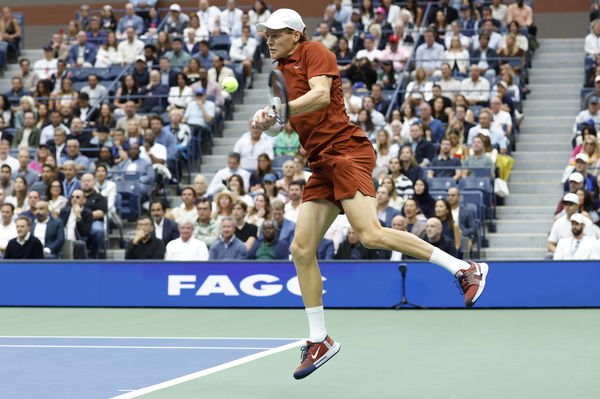
Imago
Jannik Sinner of Italy hits a return to Carlos Alcaraz of Spain in the first set in the Men s Finals of the 2025 US Open Tennis Championship in Arthur Ashe Stadium at the USTA Billie Jean King National Tennis Center in Flushing Meadows, New York, on Sunday, September 7, 2025. PUBLICATIONxINxGERxSUIxAUTxHUNxONLY NYP20250907128 COREYxSIPKIN
After the 90s servefest, courts slowed dramatically, hitting their low point between 2007 and 2014. Since then, speeds have picked up again, and now nearly 70% of men’s points end in under four shots. With today’s raw firepower, even slower courts might not extend rallies by much, while faster ones don’t necessarily shorten them either, since hard-court exchanges are already brief. What’s surprising is that slower courts can sometimes spark more variety, and Carlos Alcaraz and Jannik Sinner have dominated the 2025 Grand Slams.
ADVERTISEMENT
As for tournaments wanting the best names in the finals, that’s nothing new. Shouldn’t the biggest events decide the best? In most sports, reducing randomness to let skill shine is part of the deal. Why that’s controversial is hard to say.
So in the end, Roger Federer and Jannik Sinner have a point: today’s courts feel far too similar. The sport needs true extremes again – some genuinely fast surfaces and some genuinely slow ones to bring back variety. At the moment, Indian Wells stands alone as the only medium-slow stop on the big tour, while the rest (Australian Open, Miami, Cincinnati, US Open, Paris, and the ATP Finals) all cluster around that same medium-fast range.
Take the ATP Finals as an example. Over the past four years, the event has averaged an ace rate of about 15%. Ball issues have added to the inconsistency, though there are whispers that those problems will get resolved. The trouble is, the debate hasn’t moved since 2016. Both court speeds and player styles have changed dramatically since then, and acting like nothing has shifted only makes the conversation harder to untangle.
ADVERTISEMENT
ADVERTISEMENT
ADVERTISEMENT
ADVERTISEMENT

